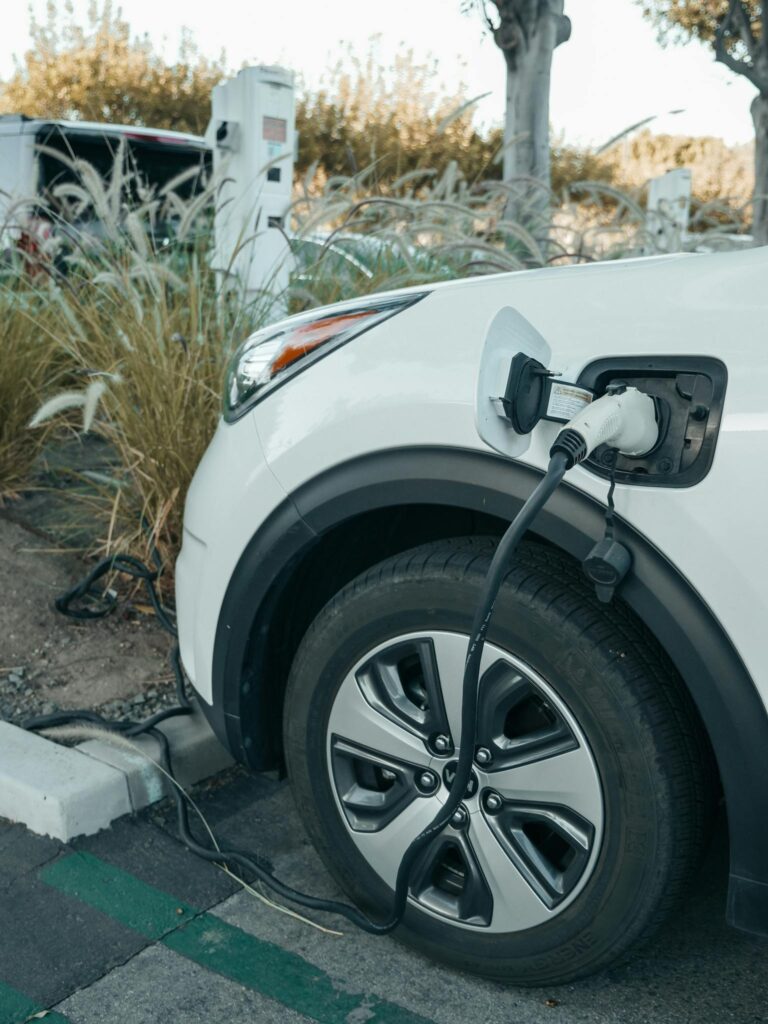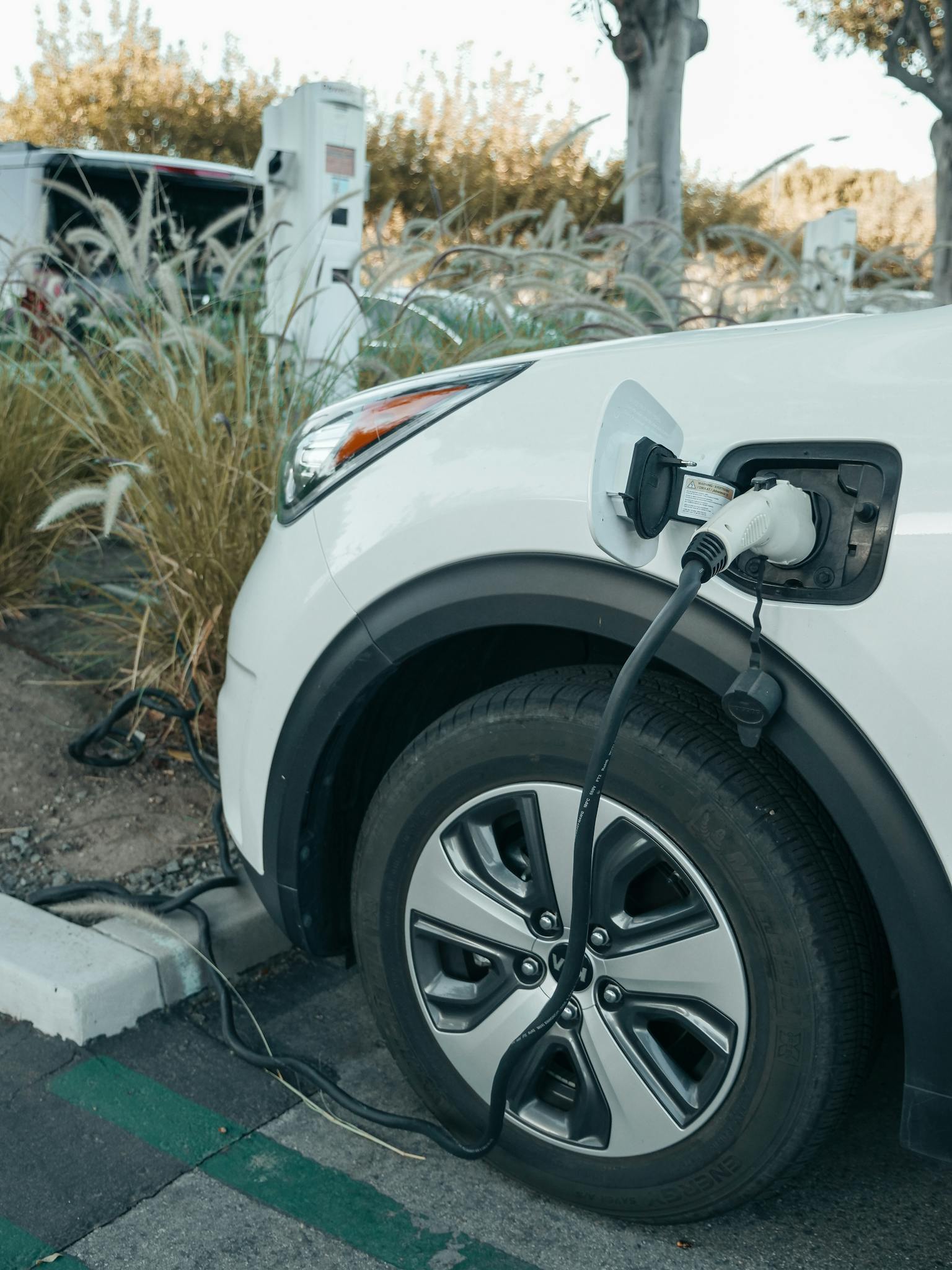Electric Vehicle Charging Explained: Your Complete 2024 Guide (H1)
Making the switch to an electric vehicle comes with an important learning curve: understanding how to keep your EV charged and ready to roll. While plugging in might seem more complex than filling up at a gas station, today’s charging solutions are becoming increasingly user-friendly and accessible. Whether you’re a new EV owner or just exploring the possibility of going electric, this comprehensive guide will demystify the charging process, break down the costs, and help you navigate both home and public charging options. From basic household outlets to the latest DC fast-charging technologies, we’ll cover everything you need to know about powering your electric vehicle in 2024.
Quick Take:
- Learn about three main charging levels
- Understand home charging setup costs and requirements
- Explore public charging networks and new standardization
- Get practical tips for daily charging and road trips

Understanding EV Charging Levels (H2)
If you’re new to electric vehicles, understanding the different charging levels is crucial for a smooth ownership experience. Think of EV charging levels like filling up your smartphone – you can use a basic wall charger (slow), a fast charger (medium), or a super-fast charger (quick). Let’s break down each level and what it means for your daily driving.
Level 1 Charging: The Basic Home Solution (H3)
Level 1 charging uses your standard 120V household outlet – the same one you’d plug a lamp into. While it’s the slowest charging method, adding about 3-5 miles of range per hour, it requires no special installation and works with the charging cable that comes with your EV. This method is ideal for plug-in hybrids or EVs with shorter daily commutes, typically providing 30-40 miles of range during an overnight charge.
Level 2 Charging: The Sweet Spot (H3)
Level 2 charging operates on 240V power – the same type used for your clothes dryer or electric oven. This is currently the most popular charging solution for home use, delivering 20-30 miles of range per hour. A Level 2 charger can fully charge most modern EVs overnight, making it perfect for daily use. Installation costs typically range from $500 to $2,000, depending on your home’s electrical setup.
DC Fast Charging: The Road Trip Enabler (H3)
DC Fast Charging, sometimes called Level 3 or DCFC, is the fastest charging option available. These stations can add 100-200 miles of range in just 30 minutes, depending on your vehicle’s capabilities and the station’s power output. While you won’t install these at home, they’re crucial for long-distance travel and are increasingly available at highway rest stops, shopping centers, and dedicated charging stations.
Quick Take: Charging Speeds Comparison
- Level 1 (120V): 3-5 miles of range per hour
- Level 2 (240V): 20-30 miles of range per hour
- DC Fast Charging: 100-200 miles in 30 minutes
Understanding these charging levels helps you plan both your daily charging routine and longer trips. While Level 1 charging might suffice for some drivers, most EV owners find that investing in a Level 2 home charging solution provides the best balance of convenience and cost. DC Fast Charging, while the fastest option, is typically reserved for road trips due to its higher cost and potential impact on battery longevity when used frequently.
Home Charging Setup and Costs (H2)
Setting up a home charging solution is one of the first steps most EV owners take to ensure convenient, cost-effective charging. While the initial investment might seem significant, home charging typically costs less per mile than both public charging and traditional gasoline. Let’s explore what you need to know about creating your home charging setup.
Basic Installation Requirements (H3)
Before installing a home charging station, you’ll need to assess your home’s electrical capacity. Most homes will require a dedicated 40-amp circuit for Level 2 charging, though some newer EVs can utilize up to 60 amps for faster charging speeds. A licensed electrician should evaluate your electrical panel to ensure it can handle the additional load and determine if any upgrades are necessary.
Equipment and Installation Costs (H3)
The total cost for a home charging setup breaks down into two main components:
- Level 2 charging unit: $300-$700
- Professional installation: $500-$1,500
- Optional electrical panel upgrade: $1,000-$2,500
Smart charging units may cost more upfront but offer valuable features like scheduling, usage monitoring, and smartphone control. Many utility companies offer rebates or incentives that can offset these costs significantly.
Smart Charging Features (H3)
Modern EV chargers come equipped with convenient features that maximize efficiency and savings:
- Scheduled charging during off-peak hours
- Power output monitoring
- Remote start/stop via smartphone
- Energy usage tracking
- Over-the-air updates
- Integration with home energy systems
Utility Rate Considerations (H3)
Many utility companies offer special EV charging rates that can dramatically reduce your charging costs:
- Time-of-use rates (cheaper nighttime charging)
- EV-specific plans with reduced rates
- Smart charging programs with additional incentives
- Solar integration options for maximum savings
Quick Take: Cost Savings
The average EV owner saves $30-$60 per month charging at home compared to public charging stations, and $70-$100 compared to gasoline costs. Most home charging installations pay for themselves within 2-3 years through these savings.
Remember to check local building codes and obtain necessary permits before installation. Working with a certified electrician who has experience with EV charger installations will ensure your setup is safe, efficient, and up to code. Many EV manufacturers can recommend qualified installers in your area.
Public Charging Networks in 2024 (H2)
The public charging landscape has evolved significantly in 2024, with major networks expanding their coverage and new standardization efforts making charging more accessible than ever. For EV owners, understanding how to navigate these networks is crucial for stress-free travel beyond their home charging range. Let’s explore the current state of public charging infrastructure.
Major Charging Networks Overview (H3)
Several key players dominate the public charging space in 2024:
- Tesla Supercharger Network: Now open to all EVs
- Electrify America: Over 3,500 DC fast chargers nationwide
- ChargePoint: Largest Level 2 network with 200,000+ ports
- EVgo: Focus on urban fast-charging locations
- Shell Recharge: Expanding presence at existing gas stations
Each network offers varying charging speeds and pricing structures, with DC fast charging typically ranging from $0.30 to $0.60 per kWh.
Payment Methods and Subscriptions (H3)
Most networks now offer multiple payment options to streamline the charging process:
- Tap-to-pay credit card readers
- Network-specific apps
- Universal charging apps (PlugShare, A Better Routeplanner)
- Monthly subscription plans with discounted rates
The growing adoption of Plug and Charge technology means many newer EVs can start charging automatically when plugged in, eliminating the need for separate apps or cards.
Finding Charging Stations (H3)
Modern tools have made locating chargers easier than ever:
- Built-in vehicle navigation systems
- Third-party apps like PlugShare
- Google Maps integration
- Real-time availability updates
- User reviews and photos
These tools typically show charging speed, cost, and current station status, helping drivers plan trips more effectively.
NACS Adoption and Standardization (H3)
The biggest story of 2024 is the widespread adoption of Tesla’s North American Charging Standard (NACS):
- Major automakers switching to NACS ports
- Existing CCS stations adding NACS cables
- Simplified charging experience for all EVs
- Increased charging network reliability
Quick Take: Public Charging Tips
- Always have a backup charging location planned
- Check user reviews for station reliability
- Consider multiple charging network memberships
- Keep adapters in your vehicle if needed
- Plan charging stops around meal breaks on road trips
The public charging experience continues to improve as networks expand and standardize. While home charging remains the primary charging method for most EV owners, the robust public charging infrastructure makes long-distance travel increasingly practical for all electric vehicles.
Remember to download key charging apps and set up payment methods before your first road trip. Having multiple charging network options ensures you’re never left stranded, even if your preferred network is temporarily unavailable.
Final Thoughts: Embracing the EV Charging Evolution (H2)
As we’ve explored throughout this guide, EV charging in 2024 has become more accessible, affordable, and convenient than ever before. The combination of robust home charging solutions and an expanding public charging infrastructure means that range anxiety should be a concern of the past. Whether you’re charging overnight in your garage, topping up at work, or fast-charging on a road trip, there’s a charging solution to fit every lifestyle and driving pattern.
The shift toward standardized charging ports (NACS) and improved charging networks demonstrates the industry’s commitment to making EV ownership increasingly practical. While the initial setup of home charging requires some investment, the long-term savings and convenience make it worthwhile for most EV owners. Remember that charging habits will evolve with experience, and what works best for you may differ from other EV drivers.
Pro Tips to Remember:
- Start with a home charging solution when possible
- Take advantage of utility company incentives
- Download multiple charging apps for backup options
- Consider charging speed when purchasing your EV
- Plan ahead for long-distance travel






